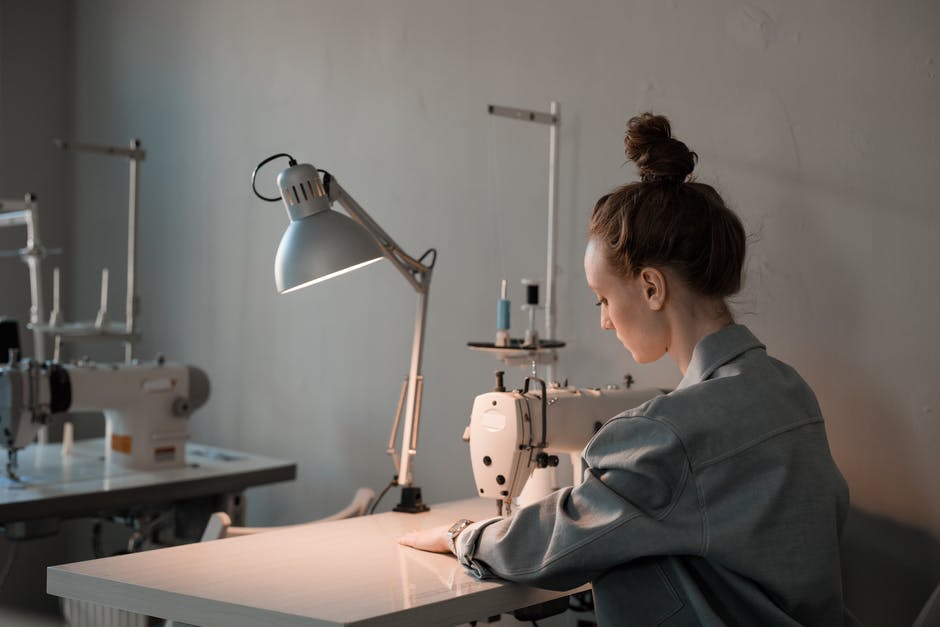Did you know that hobbies can help boost your mental health? Do you love to sew and make clothes or quilts? Learn how to sew if you always had an interest.
If you want to set up a sewing room, we can help. In this guide, we’ll go over how you can create a sewing station. We’ll go over some of the essential sewing materials you should include in this space.
Want to learn more? Keep reading.
You’ll Need Decent Lighting
If possible, set up your sewing station near a window. The natural light is perfect for any crafting or sewing project.
Yet, super-bright sunlight will end up damaging fabrics or bleaching colors. If the lighting’s dim, you will end up straining your eyes. You can get a lamp for task lighting when you need to do close-up work.
What About Storage?
As a sewer, you’ll also need to consider where you will store your tools and materials.
Consider getting some shelving installed above your sewing machine. Place clear containers on the shelves so you can see what’s inside each one.
For example, if you use an elastic or stretch cord a lot, make sure you have a specific container for the cords.
You could label the containers as well. You’ll also want to store your bobbins and thread. Look for a particular thread holder where you can hang the bobbins and spools of thread.
Get a Cutting Table
To cut material for a new project, you’ll want a sturdy and wide table. Cutting material on the floor or a small table’s difficult. Look at getting a folding table if you don’t have the space for a full-sized table.
You’ll Need a Quality Sewing Machine
For your sewing station, you’ll want to get a quality sewing machine. Depending on what projects you’d like to complete, you’ll need a specific sewing machine. A long-arm machine is an excellent option for quilters.
To complete embroidered embellishments, get a computerized computer machine. If you want to complete basic sewing, get any machine.
Pick Up a Sewing Table
You’ll need a sturdy table to place your sewing machine. If the table isn’t sturdy, your machine will end up bouncing or wobbling as you sew.
Look at getting a specific table that sits at the proper height. This way, you’ll be able to place your sewing machine at a reasonable level. You’ll be able to prevent the fabric from stretching or pulling while you sew.
Some sewing tables will have fold-out extensions. You could use the table as your cutting table too.
Get a Comfy Seat
You want to look at investing in a comfortable chair for your sewing station. Consider looking at an adjustable office chair. The chair will provide you the support you need while working on different projects.
Pick Up Tools to Mark Material
Marking wheels, tailor’s chalk, transfer paper, and fabric markers are essential tools. If you need to adjust your pattern, you can quickly grab the tool you need.
Consider adding a ruler, scissors, tape, a pencil sharpener, and more to your kit.
Space for Pressing Material
Pressing your material properly will determine if you have a misshapen seam or a crisp fit. Make sure you have space for your ironing board and iron. This way, you can use these tools while working on your project.
Look at getting an ironing board that has a removable cover. This way, you can prevent any dye from transferring to a project.
Files or Containers for Patterns
You should have a file or clear container for your patterns. Patterns tend to get shoved away and end up crumpled or torn. Gather together the pattern pieces and place them in a baggie.
Make sure you mark the pattern, so you know what the bag contains. Mark any unlabeled pieces or modifications you made to the design.
To keep things organized:
- Consider labeling the bag with the pattern number and brand
- Include the sizing and modifications you made
- Make sure you also keep the original pattern details
Create an Inspiration Board
Consider putting up a board where you gather together information and pattern ideas. You could have a board above your sewing machine where you pin different colors or fabrics.
You could also print off pictures, reference sheets, or other project information.
Don’t Forget a Calendar
If you want to finish a project for a friend, you might want to track when the project should get completed.
Make sure you keep a calendar near your station. This way, you can keep track of when different parts of the project should get completed.
You’ll be able to look at the calendar and figure out when you can work on the project.
Pick Up a Mirror
If you do a lot of garment or fitting work, you should look at picking up a mirror for your sewing station.
Look at getting a foldout trio if possible. This way, you can adjust the side mirrors to look at the back of the garments.
If you don’t work on clothes, consider still putting up a mirror in your area. The mirror will help make a smaller space appear brighter and larger.
Now You Know How to Set Up a Sewing Station
We hope this guide on creating a sewing station was helpful. When setting up your sewing station, consider what items you’ll need to use often. Store patterns, materials, and tools in clear containers.
You should also pick up an ironing board, iron, and a foldable table for cutting material. Make sure you have decent lighting, so you don’t end up straining your eyes.
Are you looking for more helpful tips? Check out our resources on the blog.

